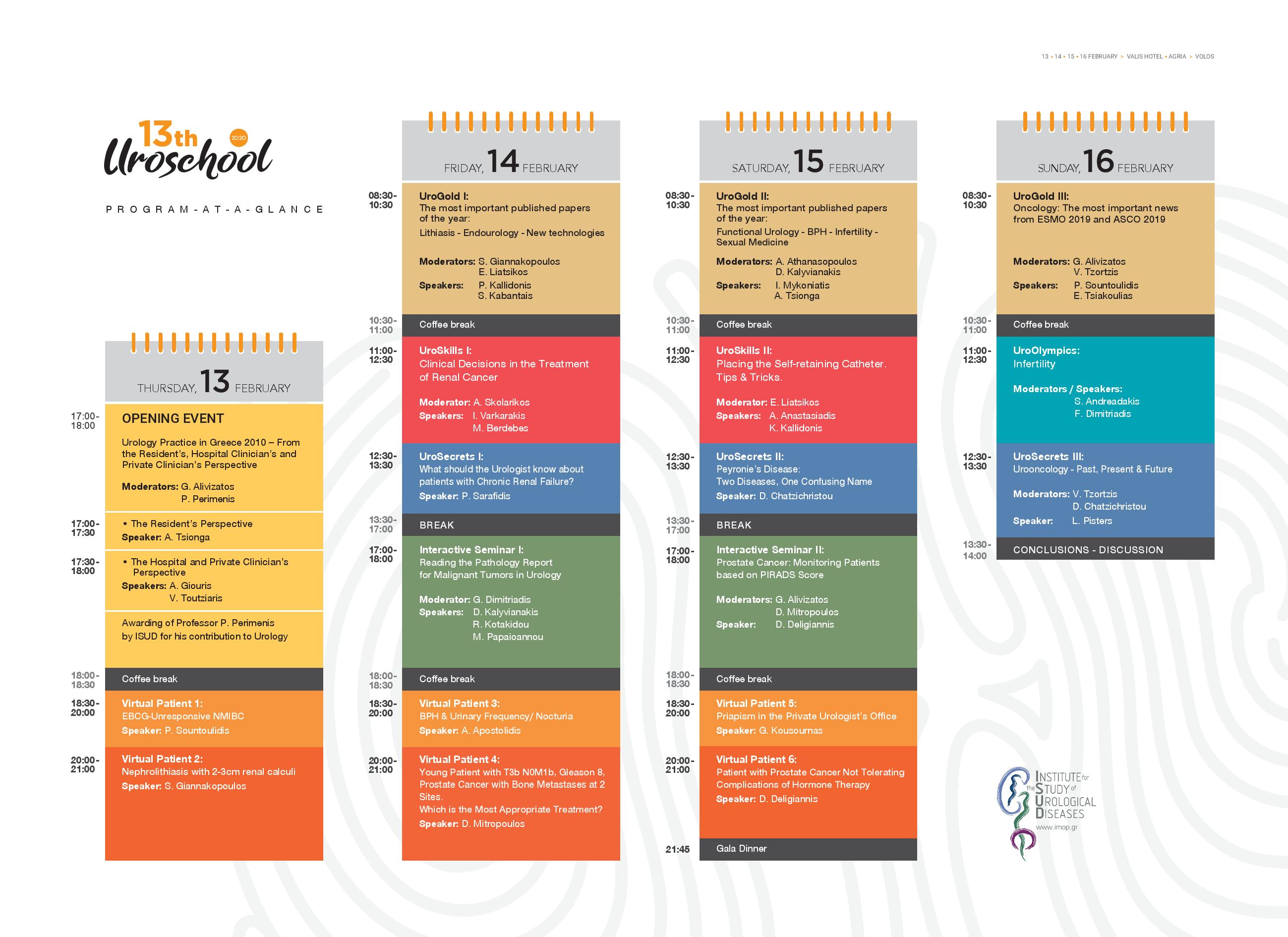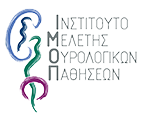
UroGold I: The Most Important Published Papers of the Year: Lithiasis – Endourology – New Technologies
Articles published during the last 12 months demonstrating that technology is changing data in Endourology. How far are we from the day when prostate and prostate stones will be treated on a one-day clinic basis? And what new is there to use tomorrow in our office?
Coffee break
UroSkills Ι: Clinical Decisions in the Treatment of Renal Cancer
Significant progress has been made in renal cancer over the past decade, but was then lost sight of. And yet there are data and, above all, the experience to make clinical decisions. A series of cases will take us on a journey to new knowledge.
UroSecrets 1: What should the Urologist know about patients with Chronic Renal Failure?
Every day we see patients with renal failure. Many times the slight increase in creatinine levels passes by without any recommendations given by the Urologist -mostly because it is an issue we don't know much about.
Interactive Seminar I: Reading the Pathology Report for Malignant Tumors in Urology
What is cancer, after all? For the Urologist, it is the ‘Pathology Report’. Though, how many of us have ever seen with our own eyes even one histology slide? And how many of us discuss the result with the Pathologist?
Coffee break
Virtual Patient 3: BPH & Urinary Frequency/ Nocturia
We have a patient with moderate obstruction shown by uroflowmetry that could questionably be treated with surgery, but the irritating symptoms are still there. Will we operate and still have the symptoms remain? And what if we treat urinary frequency but nocturia still persists?
Virtual Patient IV: Prostate Cancer with Bone Metastases at 2 Sites. Which is the Most Appropriate Treatment?
A difficult case that puzzles us. He is a young man, interested in both his survival and quality of life. The metastatic burden is limited, but still inclusive to describe metatastic cancer. Are there really only 2 bone metastases? Does that really matter in how to differentiate the treatment?
UroGold II: The Most Important Published Papers of the Year. Functional Urology – BPH – Infertility – Sexual Medicine
Functional Urology covers the biggest part of our practice in the office, and the new data on the field can be of great help. The same goes for the news regarding men trying to conceive or cope with difficulties in their sex lives.
Coffee Break
Uroskills II: Placing the Self-retaining Catheter. Tips & Tricks
One of the first things we learn to do in Urology. But do we actually learn how to do it properly? There are frequently problems. Yet, there are manipulations that can help us resolve the problem.
UroSecrets 2: Peyronie’s Disease: Two Diseases, One Confusing Name
It is an autoimmune disease. We wait until it gets stable and then we operate. However, this approach -that is unfortunately the rule- is wrong. The disease has two clearly distinct stages that are distinguished based on the formation of fibrotic plaque.
Interactive Seminar II: Prostate Cancer - Monitoring Patients based on the PIRADS Score
PSA levels are high and, before undergoing a biopsy, the patient does a multi-parametric MRI. And we receive the results. What do we do with a patient with PIRADS 2? Would it make any difference if it were PIRADS 3?
Coffee break
Virtual Patient 5: Priapism in the Private Urologist’s Office
The patient comes to the office, we perform intracavernous injections or a penile triplex (administering high doses of vasoactive drugs) and he develops priapism.
Virtual Patient 6: Patient with Prostate Cancer Not Tolerating Complications of Hormone Therapy
Hormone therapy has been here for decades and the problem of intolerance to the treatment is diachronic. The solution is obviously not asking for the patient's “patience” –something that we usually rely on. But do we actually know what to do?
UroGold III: Oncology – The Most Important News from ESMO 2019 and ASCO 2019
Two large Congresses that we do not attend but are rapidly changing our knowledge and treatment of patients with Urological Cancer. Two colleague Urologists are presenting us with the most important data that have emerged and that are highly useful for our daily practice.
Coffee Break
UroOlympics: Infertility
Twenty (20) questions divided into 3 categories: a) basic knowledge, b) specific knowledge and c) specialized knowledge. Participants answer electronically and, within 1 minute, the correct answer is provided based on evidence (1-2 slides).
UroSecrets III: Urooncology – Past, Present and Future
Urooncology constitutes a difficult field in Urology, regarding both training and practice. It is a great honor for all of us in UroSchool to have Professor L.
















